Hello, world!
We are Francesc Giménez and Núria Samsó, head teacher and pedagogical coordinator at Institut de Gurb (Barcelona). We are enthusiastic about our job and always willing to learn and implement new things to improve our school and education in general.
From the 16th to the 20th of May we have lived a great experience visiting Mittelschule Pyrkergasse, a high school in Vienna, Austria. We invite you to read about our experience and all the things we did and learned in Austria.
About the school
Mittleschule Pyrkergasse is a school located in Vienna, in the 19th district, and it has a tradition of almost a hundred years. It is a vocational middle school with an increased social focus. This means that the students not only receive a well-founded middle-level education, but also gain insight into the professional and working world. This is done through excursions and taster days in companies as well as intensive information about training paths in order to specify the career aspirations.
The Austrian education system
In Austria, children aged three and over can attend a nursery school (kindergarten) voluntarily. As soon as they are five years old they must atatend nursery school in a half-day form. Kindergarten is not part of the school system, however.
In Austria compulsory schooling starts at the age of six and lasts for nine years. One nursery or school year lasts for ten months (from September to June). There are private and state schools; in state shools, no tuition fees are charged. The Austrian school system provides for a variety of education and training options which are designed to meet the needs and interests of children and their parents.
Primary level
In Austria every child’s education starts with four years at primary school (Volksschule). Pre-primary education is provided for children who have reached compulsory school age (i.e. at the age of six) but are not yet mature enough for school (e.g. because they have difficulties following instruction).
Children with special educational needs can attend either a special needs school (Sonderschule) that is tailored to their needs or primary school classes that are run in an integrative (inclusive) scheme. Primary schools and special needs schools impart comprehensive general education to all pupils with the objective of fostering their social, emotional, intellectual dna physical skills and abilities. Classes for children with special educational needs additionally take the children’s individual disabilities into account.
Lower secondary level
The first differentiation of the school system is at the beginning of lower secondary level. Schoolchildren have a choice between two types of school that last for four years each: the lower secondary school (Hauptschule) and the lower cycle of secondary academic school (allgemein bildende höhere Schule or AHS – Unterstufe). Schoolchildren with special educational needs can continue attending special needs school from the fifth to the eighth year. Afterwards they can choose from among intermediate and higher school levels depending on their inclinations and talents.
Lower secondary schools provide schoolchildren with basic general education, preparing them for transfer to upper secondary level and for working life.
The lower cycle of AHS aims to impact a broad and advanced general education. It is offered in three branches with different focuses: as classical secondary academic school (klassisches Gymnasium) with Latin and as secondary academic school (Realgymnasium) specialising in sciences or economics. In the 2008-2009 school year the pilot project new seconday school (Neue Mittelschule) was launched at lower secondary level. This ia school for all 10-to-14-year-olds. The curricula of a Realgymnasium at the lower cycle of AHS are valid for new secondary schools. It is planned to introduce this scheme as a permanent school form as of 2016.
Upper secondary level
For the majority of Austrian schoolchildren the first school year at upper secondary level is the final year of compulsory schooling at the same time. Then they can decide between vocational (VET) and a general education pathway. VET programmes are provided within the framework of apprenticeship training (dual system), at VET schools (BMSs) and VET colleges (BHSs). General education is imparted at the upper cycle of AHS. Depending on their interests and inclinations there is the choice between a classical, business, science, musical and artistic or language focus. Some 80% of schoolchildren opt for a VET programme after completing lower secondary level.
VET programmes
Young people who want to attend a VET programme in the dual system after lower secondary level are obliged to complete their ninth year of compulsory schooling first. This is in most cases done at a one-year pre-vocational school (Polytechnische Schule). Due to the variety of subjects, company visits and practical days at training workshops provided at pre-vocational school, students are offered tailored guidance for their future career decision. Subsequent apprenticeship training (Lehrlingsausbildung) is provided both at the training enterprise (Lehrbetried) (practical training, which makes up some 80% of the training period) and part-time vocational school (Berufsschule). It is the task of theses vocational schools to expand the trainees’ general education and complement the specialist knowledge and skills they are taught in the training enterprises. Depending on the apprenticeship, training lasts between two and four years, but mostly three years. At the end of the training, every apprentice can take an apprenceship-leave examination (Lehrabschulssprüfung).
Young people with special educational needs, disabilities or disadvantaged youths have the possibility to attend and integrative VET programme (integrative Berufsausbildung). By training in partial qualifications which the apprentices agree on with their company it is possible to meet the special needs of theses young people. Integrative VET is supervised and supported by vocational training assistants.
Another VET form of upper secondary level is VET school (berufsbildende mittlere Schule or BMS). It aims to impart to students the fundamental subject-specific skills that enable graduates to exercise their occupation immediately upon its completion and also aims to expand their general education. VET schools mostly last between three and four years, but there are also one-year and two-year forms.
Schools for general healthcare and nursing (Schulen für allgemeine Gesundheits und Krankenpflege) cannot be started before successful completion of the tenth year of schooling. Training is provided within the dual system, with practical training at a hospital and theoretical education at school. They are completed with a diploma examination.
Since 1997, graduates of apprenticeship training, of three- and four-year VET schools and of schools of healthcare and nursing have had the possibility to take the so-called Berufsreifeprüfung examination. It comprises four partial exams (German, mathematics, a modern foreign language and occupation-related specialist area) and entitles students to transfer to any post-secondary or tertiari establishment (higher education entrance qualification).
Another way to obtain the higher education entrance qualification is by acquiring the Studienberechtigungsprüfung certificate. It qualifies holders to study only one specific spealist area, however.
Another way to obtain the access requirements for the post-secondary and tertiary sector is to complete an add-on course (Aufbaulehrgang). Particular groups of people have to attend a preparatory or bridging course (Vorbereitungslehrgang) before entering this eduational track. Graduates of add-on courses are awarded a Reifeprüfung or diploma certificate.
Apart from apprenticeship training and vocational programmes provided by VET schools, students who have completed lower secondary level also have access to a VET college (berufsbildende höhere Schule or BHS), which provides higher vocational qualifications in different specialisations (e.g. tourism, mechanical engineering, electrical engineering, etc.) and well-founded general education. VET colleges last for five years and are completed with the Reifeprüfung and diploma examination. Students thus acquire professional qualifications and the general higher education entrance qualification (double qualification).
General education programmes
A general education is provided to students by the upper cycle of secondary academic school (allgemein bildende höhere Schule or AHS – Oberstufe). These schools mainly prepare students for university-based education programmes. They last for four years and are completed with the Reifeprüfung examination. Graduates acquire the general higher education entrance qualification.
Post-secondary and tertiary level
Successful completion of AHS or BHS as well as passing the Berufsreifeprüfung or Studienberechtigungsprüfung exams provides students with higher education entrance qualifications and hence access to the following education routes: post-secondary VET colleges (Akademien), which qualify graduates to exercise specific activities in the social services and healthcare sector, and post-sencondary VET courses (Kollegs), which are mainly oriented towards AHS graduates who want to obtain BHS qualifications. For some years Fachhochschulen have provided tertiary programmes for specific advanced-level medical professions, which is leading to a reduction in the number of post-secondary VET colleges and schools for general healthcare and nursing. University colleges or education (Pädagogische Hochschulen) train compulsory school teachers in a three-year bachelor course. On the basis of this qualification it is possible – depening on the chose subject and credit modalities – to take up a master study at a Fachhochschule or university.
At the tertiary level it is possible to enrol in three-year bachelor and then in at least two-year master programmes at Fachhochschulen and universities (Universitäten). At both institutions, students may also enrol in diploma studies. Graduates of a master course or a diploma study are entitled to erol in doctoral studies at universities. In addition, universities, Fachhochschulen and university colleges of education offer univeristy-based CVET programmes as post-graduate continuing training programmes or opportunities for specialisation for graduates. The required access qualification is either a completed study at one of the mentioned institutions or the general higher education entrance qualification in conjunction with several years of professional experience. Graduates are awarded the degree “Akademischer Experte / Akademischer Expertin” (Academic Expert), “MSc”, “MBA”, “MA”, “LL.M” or “M.A.I.S”.
People over the age of 18 who have successfully passed the apprenticeship-leave exam as well as BMS graduates can deepen their theoretical specialist education at building craftsperson schools (Bauhandwerkerschulen) and foreperson courses (Werkmeisterschulen). They last for one to two years and are completed with a final examination.
Continuing education and training – lifelong learning
People who have completed an initial vocational training (IVET) pathway at the upper secondary, post-secondary or tertiary level and start another stage in their education are usually in continuing vocational education and training (CVET) programmes. Participants in these CVET programmes are usually over the age of twenty. The Austrian CVET landscape is characterised by a high degree of institutional diversity (schools and HE establishments, educational institutions of the social partners, non-profit CVET institutions, private providers, etc.) and an associated wide range of courses.
Diary of our visit
Monday, 16th May 2022
At 9 o’clock we met Mrs Claudia Murray, the head teacher of Mittelschule Pyrkergasse. She welcomed us and told us about the school and about the Austrian education system. Afterwards, we visited the school and we planned our week there. The first impression was very good!
Tuesday, 17th May 2022
On Tuesday, we started visiting some classes. We could see what the students do in their individual learning time and then we saw project preparation. The had been introduced to scratch on the previous week and they were just practising to be ready for the next project. In the afternoon, we had the opportunity to introduce ourselves and present our project to all the teachers in the school. The meeting was an excellent idea, as they became interested in our project and they started inviting us to their classes and willing to share pedagogical conversations with us.
Wednesday, 18th May 2022
At 9 o’clock the 1st year students performed a couple of songs for us, one in German and another one in English. We could also see a Maths class in which the students were buiding polyhedrons. Then, we went to the computer room and there we could see how 2nd year students were being introduced to programming and learned computer code through Code Combat. At 11 o’clock we visited a Physics class in the science lab. In that class, the students were doing an experiment about water evaporation. The teacher did the experiment and the students made the hypothesis by answering the teacher’s questions. Then, they reported the experiment. Finally, we saw a music class in which the 4th year students were rehearsing with their band. In the afternoon, we shared a meal with some of the teachers, with whom we could continue discussing about school issues. It was very interesting!
Thursday, 19th May 2022
At 9 o’clock we went to the science lab again. This time, we saw a practical class in which the students were learning to create some bacteria. At 10 o’clock we attended a Chemistry class, also in the science lab, and at 11 we could see a Geography class with the 1st year students. They were learning about volcanoes and they built a volcano all together to see how it erupted. At 12 o’clock we had a meeting with some teachers, with whom we talked about the possibility of starting a collaboration in English. Finally, we attended a music class. This time, the 4th year students were practising body percussion. One of the students performed a song with the piano for us, and, as they were 4th year students, at the end of the class we could talk to them about orientation. It was very interesting for us to know about the plans they all had for the following school year, and it helped us understand the Austrian education system.
Friday, 20th May 2022
On Friday, it was time to say goodbye. Before leaving, however, we could talk to some students. They were very interested in our school, our projects and our way of working. They asked us about lots of things and we could also ask them different questions through which we learned about their impressions and opinions of their school system and their way of learning. They were all very happy and proud of their school, and they said they felt very excited about our visit. After that conversation, they gave us a box of Austrian chocolates with a message that we really appreaciated: they wrote “Thank you very much” in German, in English and in Catalan! We really thanked them, especially the head teacher, for their kind welcome to their school, we invited them to visit us or to contact us for further collaborations and we said goodbye.
Our conclusions
We had a very good time in Vienna and it was very interesting for us to discover a new school and a different school system. You can read about our main conclusions in the following lines:
The first thing we must mention is that the school systems of the two countries, Catalonia and Austria, have very different inclusion strategies and even points of view. Austria, like many other countries in Europe, has special needs schools. Many of the students with special needs who, in Catalonia, study in normal schools, in Austria study in these special needs schools. This means that dealing with diversity in the classroom is very different in the two countries. Here in Catalonia we deal with a wider range of diversity than in Austria, so we need more inclusion strategies in our schools.
Some of the universal strategies (the ones that affect all the students) that we have to deal with diversity in the classroom are new methodologies like cooperative learning or project work, classroom organization in groups of 4, a wide variety of assessment strategies, etc. We did not see any of these things in Austria. They do not work cooperatively, they do not have assessment rubrics, they do not modify the timetable to promote project work, etc. We saw many examples of “learning by doing”, but we think we have gone one step further in Catalonia in this sense.
It was shocking to see that their classrooms are not digitalised. They do not have screens, projectors or even sound systems in the classrooms, and the students and teachers do not work with laptops. We think we are also more advanced here in this sense.
We were also impressed to see that it was the school who was in charge of controlling the COVID cases in the school.
Apart from all this, we saw some things that surprised us positively:
-
The students have flexible timetables. In fact, their timetables vary according to the subjects they do. They can get into the school and out of it without being controlled. They are more autonomous than in Catalonia in this sense. This has a negative part, which is that families do not know the timetable in advance (it changes every year and they know in September), but it seems that the students are self-suficient there, and they travel to school on their own, by bike or using public transport.
-
The schools are specialised. For example, the school we visited is specialised in STEAM and music. Students and families choose the schools according to the students’ interests.
-
They have many resources for diversity. In Pyrkergasse they have a diversity group in each level, and in these diversity groups there are 3 teachers in the classroom for most of the time.
-
They have just one tutor in each group (in our school we have two), but classroom groups are smaller than here. It is true that some of the students were at home with COVID when we visited the school, but we think classroom groups have between 20 and 25 students in Austria.
Our conclusion is that the two systems are very different and it is difficult to compare. However, we think that we do a lot more things to deal with diversity with less resources. We wish we had as many resources as they do!
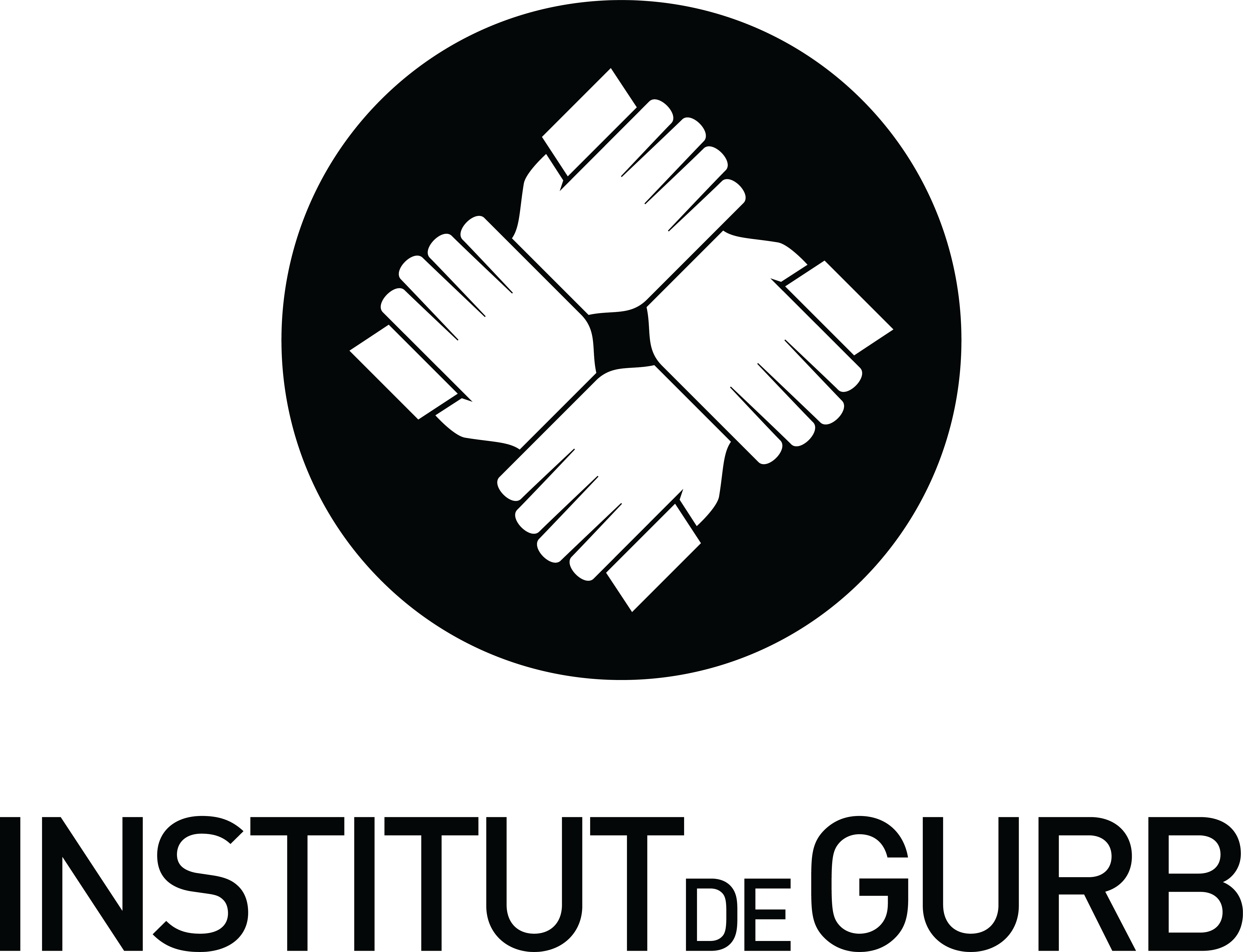


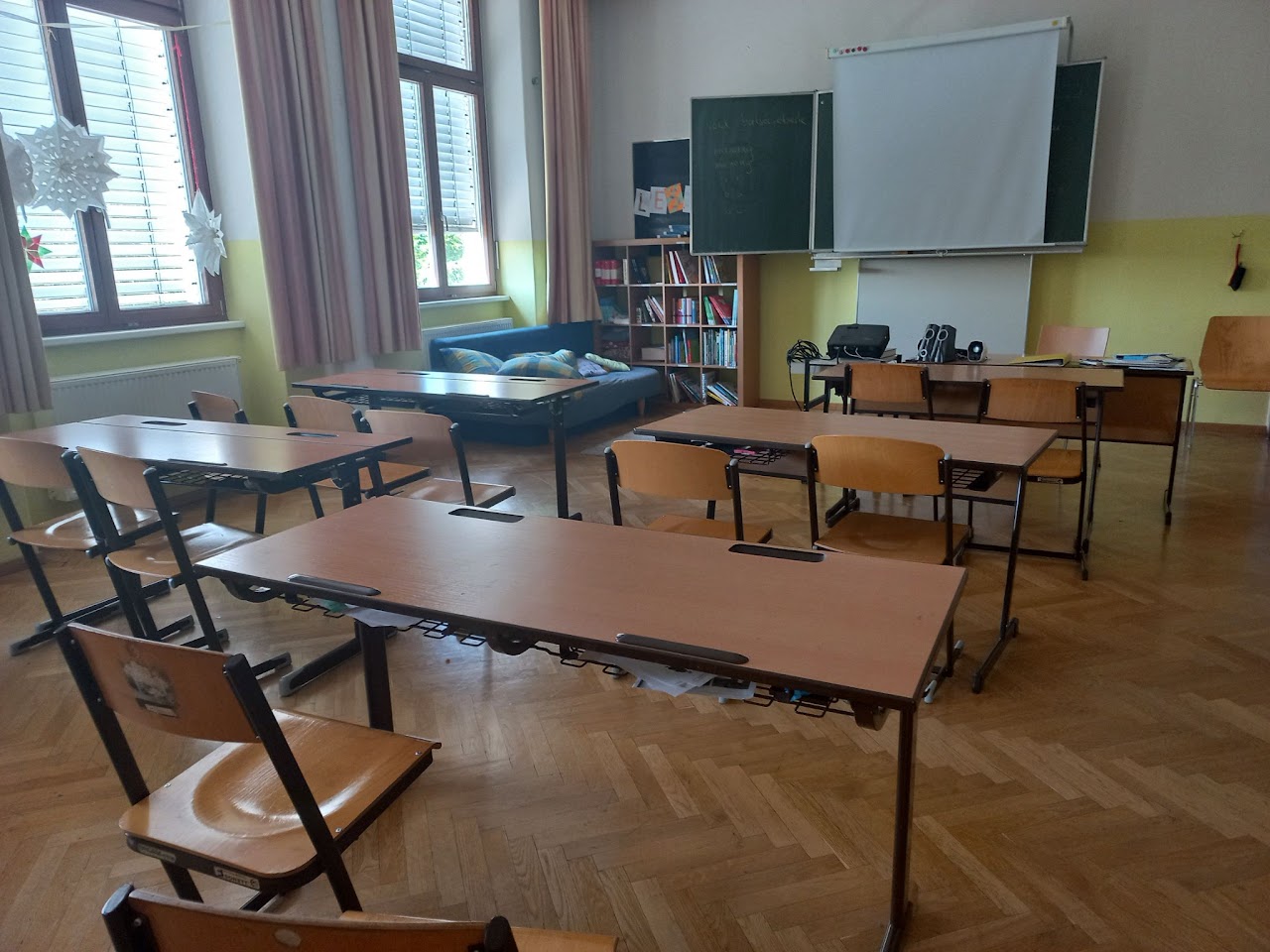
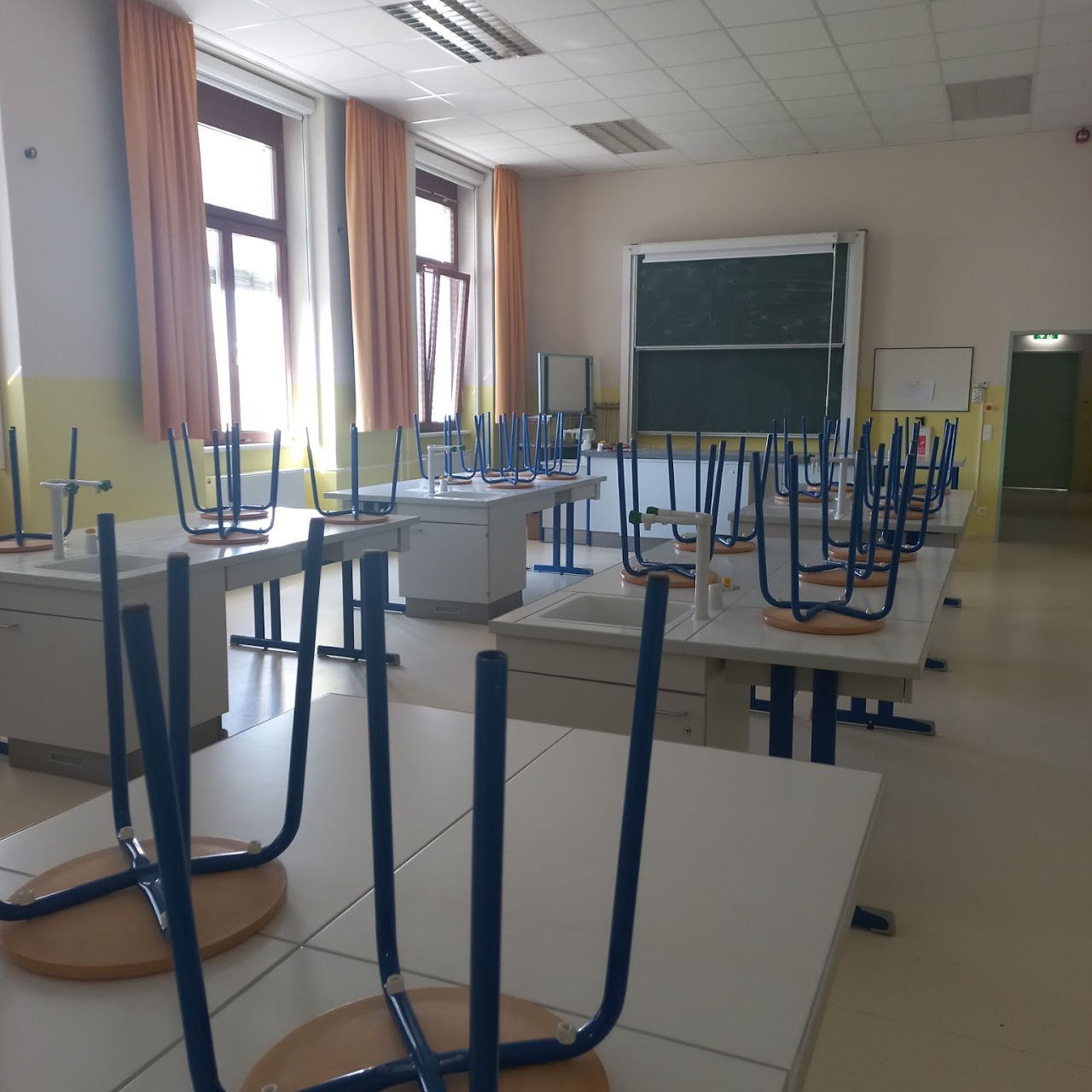

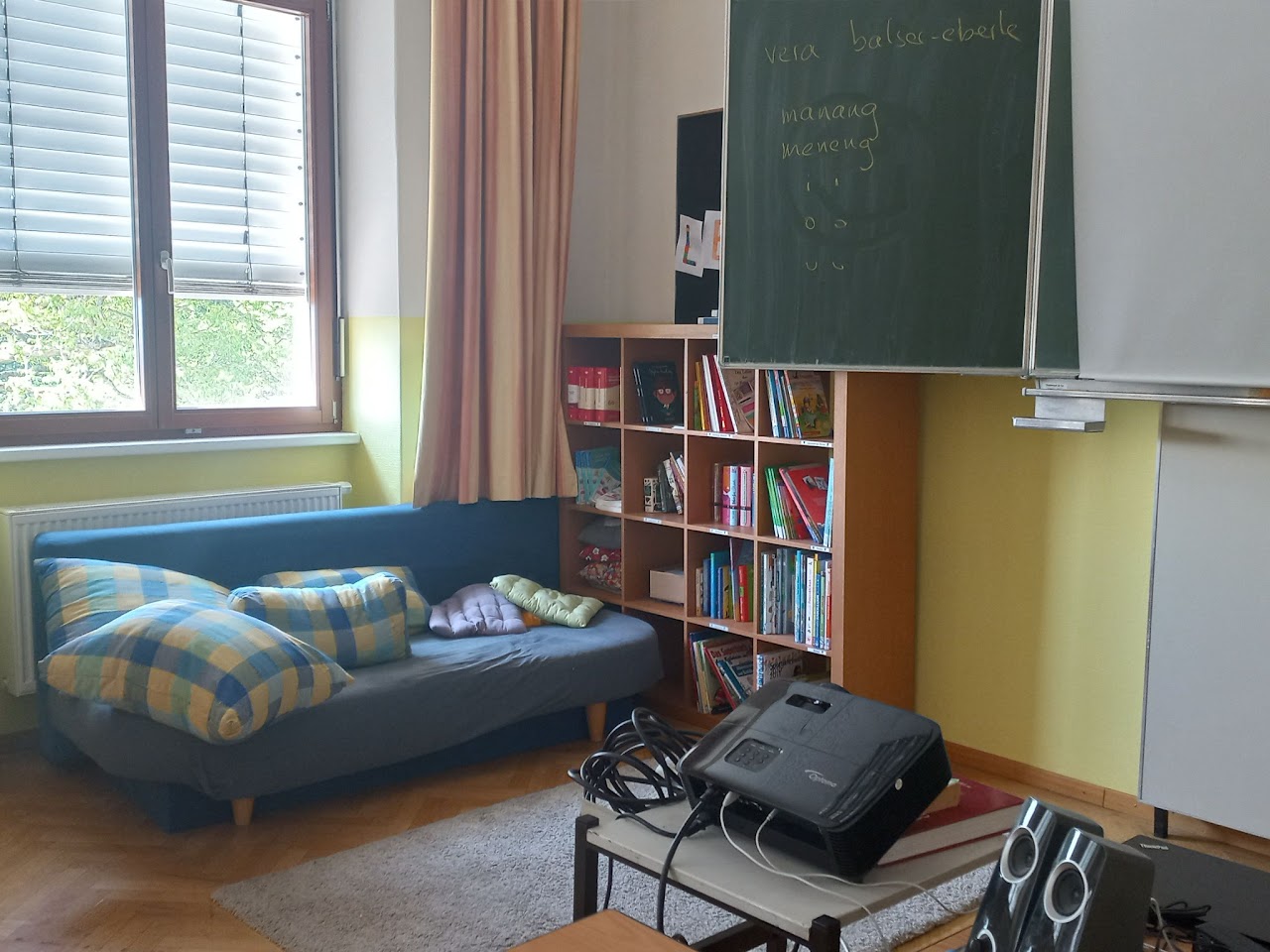
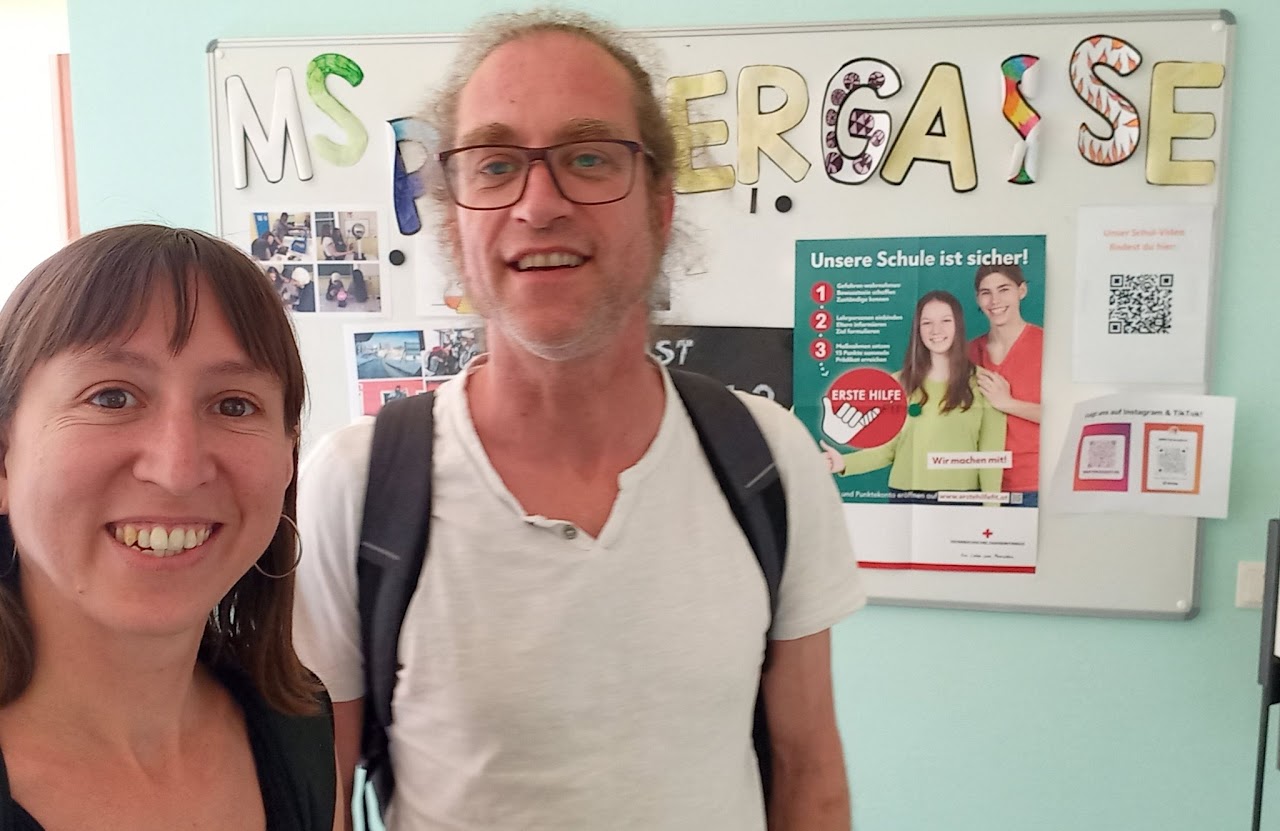


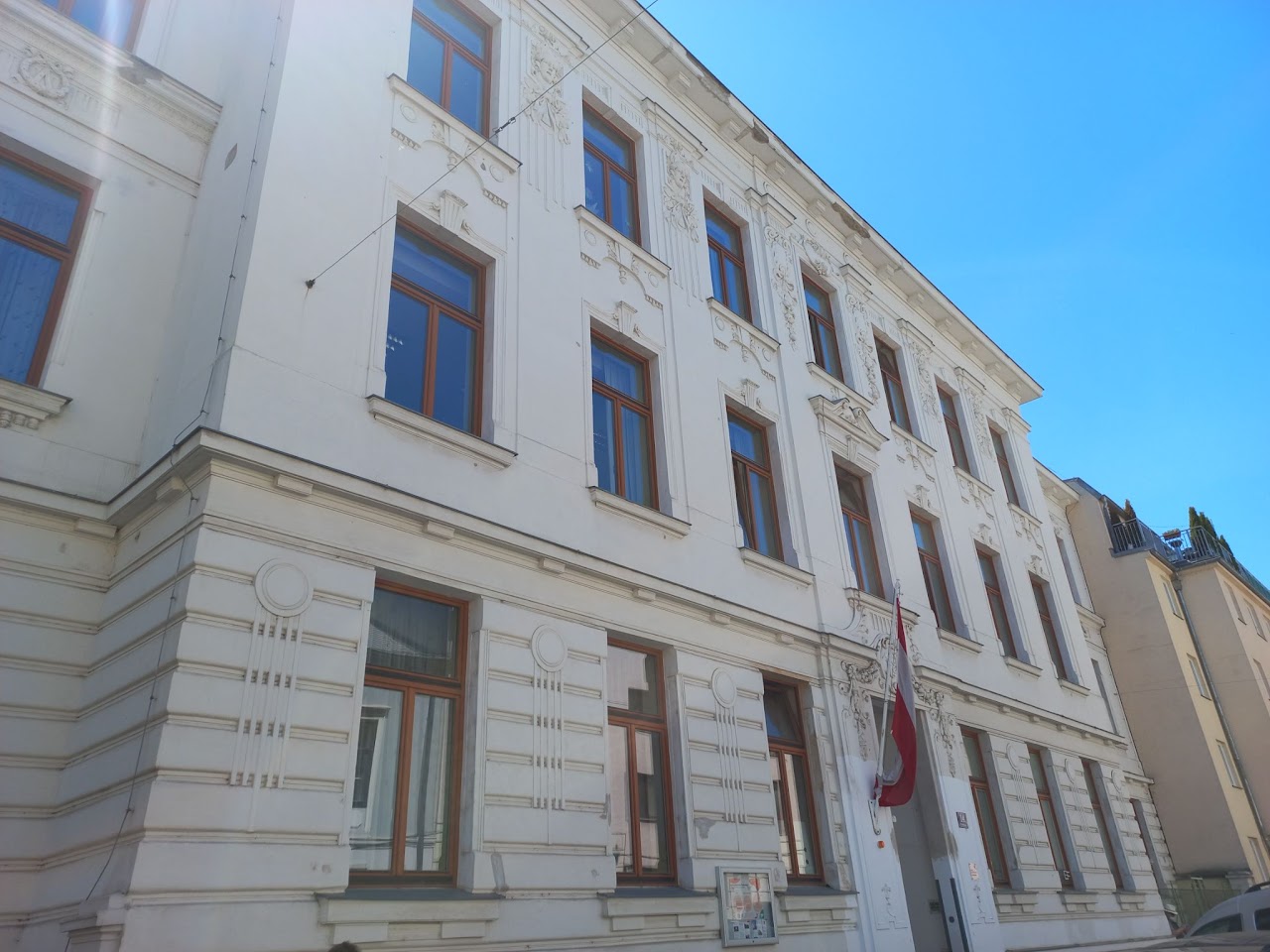
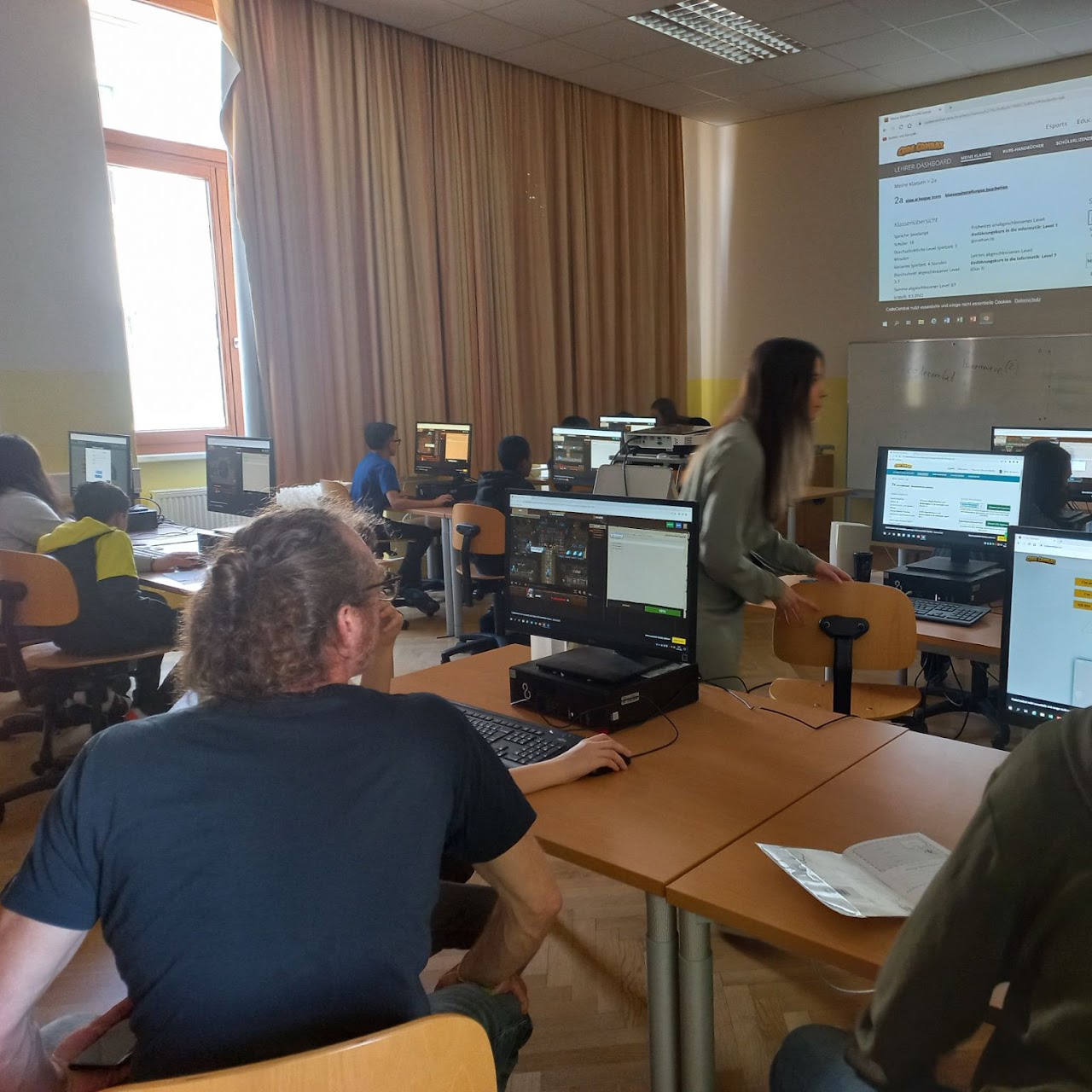


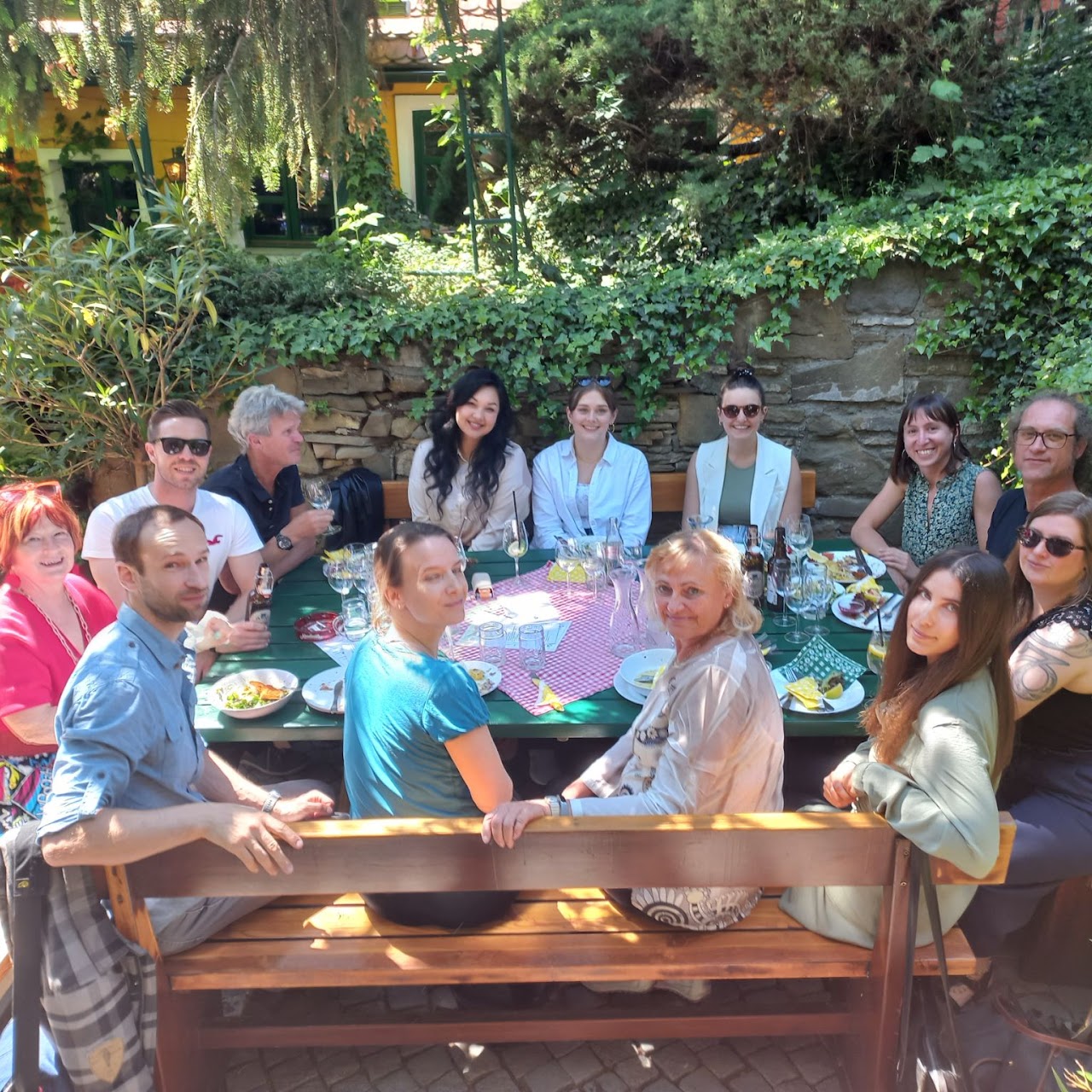


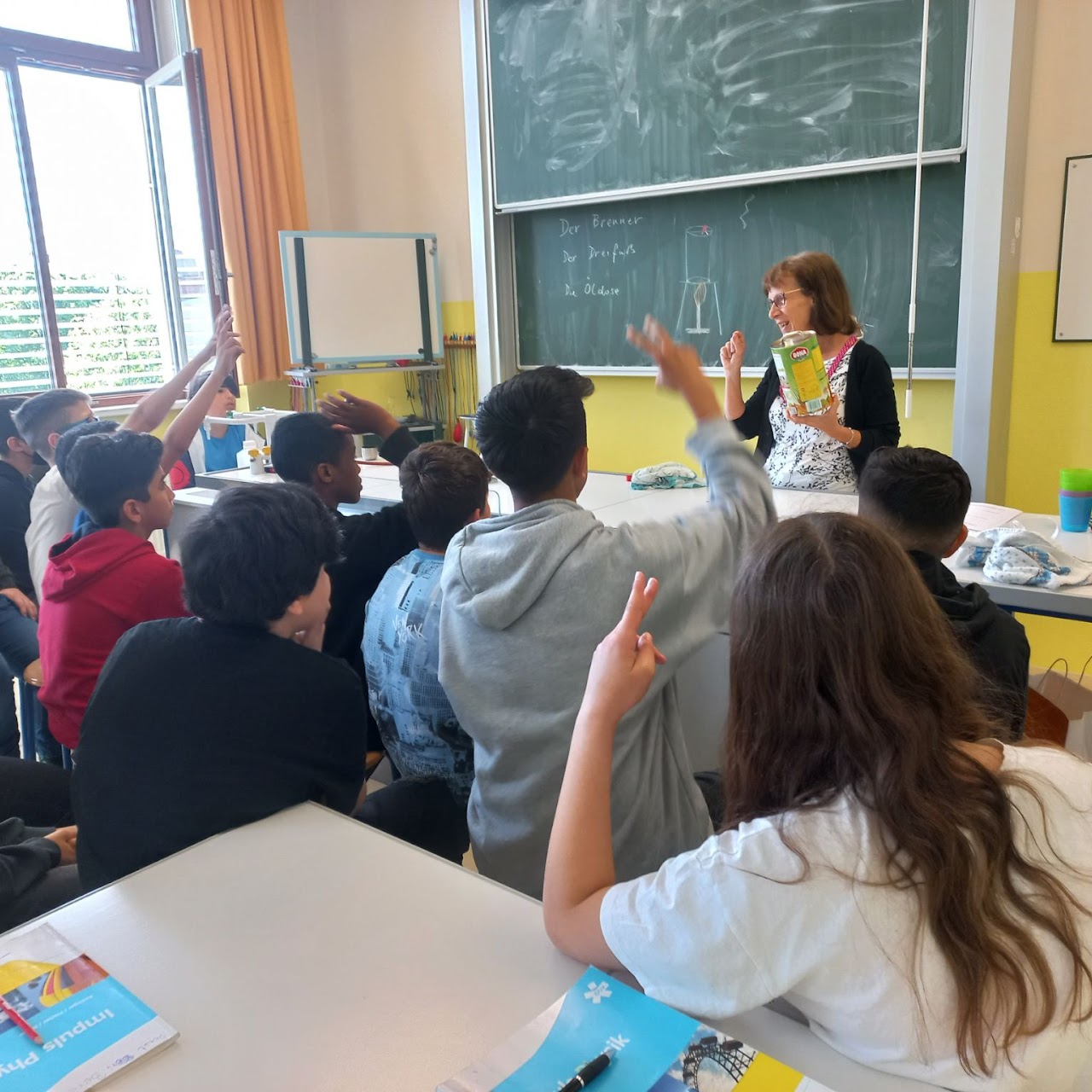





Segueix-nos!